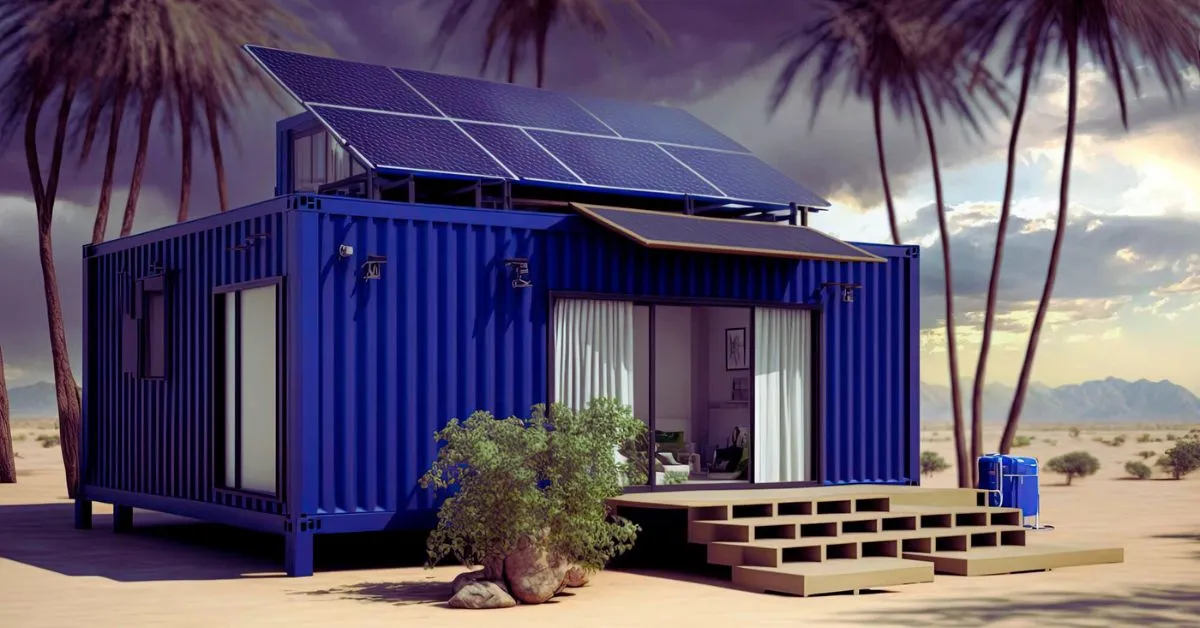How to Make Shipping Container Buildings More Energy Efficient
In the dynamic field of architectural innovation, shipping container buildings stand out as transformative solutions that marry modern design with sustainability. These structures, crafted from repurposed shipping containers, inherently embody eco-friendly principles by reducing waste and reusing materials. However, the total ecological potential of these buildings can be unlocked through comprehensive energy efficiency strategies. By enhancing energy performance, shipping container buildings cut down on utility expenses and contribute to global efforts to reduce environmental footprints. These buildings can reach their full potential as paragons of sustainable architecture through myriad strategic enhancements.
Implementing advanced insulation techniques is one of the critical strategies for optimizing the energy efficiency of shipping container buildings, helping to regulate indoor temperatures and reduce heating and cooling demands. Integrating renewable energy sources, such as solar panels, further enhances sustainability by decreasing reliance on traditional power grids. Intelligent energy management systems can also be incorporated to monitor and optimize energy usage, ensuring maximum efficiency in daily operations. Additionally, choosing energy-efficient windows and doors improves the overall thermal performance, reducing heat loss and boosting comfort for occupants. These enhancements promote greener living and increase the long-term value and functionality of shipping container buildings, making them a viable option for future-focused urban development.
Key Takeaways:
- Strategic insulation plays a vital role in maintaining energy efficiency.
- Energy-efficient windows and doors significantly lower energy demands.
- Integrating renewable energy systems enhances sustainability.
- Intelligent technologies offer optimized energy use and improved comfort.
- Water conservation is a critical component of energy efficiency.
Effective Insulation Techniques
A critical component of making shipping container buildings more energy efficient is the application of effective insulation techniques. While durable, the steel walls of containers make excellent conductors of heat and cold, potentially leading to uncomfortable temperature variations inside. To mitigate this, high-quality insulation materials are imperative. Spray foam insulation is highly recommended due to its expansive properties, which fill every nook and cranny, eliminate air leaks, and provide a formidable barrier against thermal transfer. Alternative options, such as eco-friendly recycled denim or cellulose insulation, offer commendable thermal resistance and align with sustainable building practices. Achieving an optimal R-value with these materials ensures that the interior temperature stays regulated, thereby reducing dependency on artificial heating and cooling systems and contributing significantly to energy conservation.
Incorporating Energy-efficient Windows and Doors
Windows and doors are critical interfaces in any building, often serving as weak points for energy loss. Choosing and implementing energy-efficient windows and doors in shipping container buildings can radically impact the building’s energy profile. Traditional single-pane windows and poorly insulated doors can lead to substantial energy waste, allowing cold air in winter and calm air to escape in summer. Instead, installing double- or triple-glazed windows featuring low-emissivity coatings can effectively minimize heat transfer, thus maintaining a consistent indoor climate. Additionally, doors with superior insulation properties prevent air leakage, ensuring energy savings. The strategic placement of windows can enhance the inflow of natural daylight, reducing the need for artificial lighting and consequently lowering electricity usage. Such improvements enhance the building’s energy efficiency and optimize interior comfort year-round.
Utilizing Renewable Energy Sources
Renewable energy sources are a cornerstone of establishing energy independence and sustainability in shipping container buildings. Solar panels remain one of the most efficient and flexible renewable energy options, easily adapted to the compact footprints of these buildings. By harnessing solar energy, these structures can generate a significant proportion—or even the entirety—of their energy needs, championing a net-zero energy stance. Complementing solar installations with additional renewable technologies, such as wind turbines and geothermal systems, can provide a diversified and stable energy mix. Moreover, integrating battery storage systems ensures a continuous energy supply, circumventing periods of low generation and bolstering energy security. This commitment to renewable resources significantly enhances the building’s sustainability profile while reducing its reliance on fossil fuels and grid electricity.
Implementing Smart Building Technologies
Incorporating innovative building technologies into shipping container designs introduces a new realm of sophistication in energy management. These technologies employ interconnected devices and advanced control systems to dynamically analyze and optimize energy usage. Smart thermostats, for example, learn occupants’ preferences and automatically adjust heating and cooling schedules to align with peak and off-peak times, maximizing energy savings without sacrificing comfort. Similarly, intelligent lighting systems can adapt to natural light levels and occupancy, ensuring that lights are only used when necessary. Energy monitoring systems provide valuable insights into energy consumption patterns, enabling occupants to make informed decisions about reducing energy use. These technologies enhance the living experience within container homes and empower occupants to achieve significant energy savings, showcasing how modern technology and sustainable design can coexist cohesively.
Conserving Water for Energy Efficiency
While often overlooked, water conservation plays a crucial role in the pursuit of energy efficiency. Reducing water usage inherently decreases the energy required for heating, treatment, and distribution. Shipping container buildings can minimize water consumption by implementing low-flow fixtures such as faucets and showerheads. Rainwater harvesting systems present another sustainable strategy, capturing rainwater for use in irrigation or plumbing, thereby alleviating some of the demands on water and energy resources. Gray-water recycling systems further increase efficiency by repurposing wastewater for non-critical applications, maximizing the utility of water inputs. Collectively, these water-conserving measures bolster the ecological and energy-efficient credentials of shipping container buildings, demonstrating a comprehensive approach to sustainable living solutions.
Conclusion
Shipping container buildings represent a powerful fusion of contemporary design and sustainable architecture, with immense potential to lead the way toward greener building practices. By integrating advanced insulation, high-performance windows and doors, renewable energy systems, and cutting-edge intelligent technologies, these buildings can achieve superior levels of energy efficiency. They also extend their environmental stewardship through proactive water conservation strategies. Altogether, these measures reduce operational costs and embody the broader commitment to a sustainable future. In the ever-evolving architecture landscape, shipping container buildings continue to set benchmarks for responsible and innovative design, affirming their role as beacons of sustainable development in the modern world.







